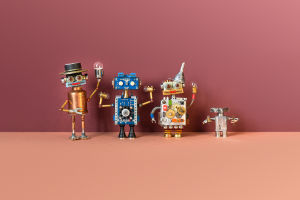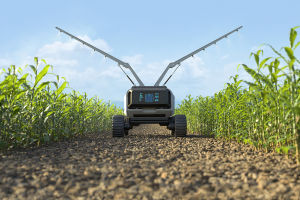
The rapid advancements in robotics have sparked both excitement and concerns about the future. Afterall, Lykkers, who hasn't watched one or more futuristic movies focused on humanoid robots?
With continuous technological progress, humanoid robots are moving from experimental laboratories to real-world applications.
This article delves into the current state of humanoid robotics, the race for humanoid robot development, their real-world applications, and what the future might hold.
Humanoid Robotics: Hopes and Concerns
Humanoid robots offer promising potential across various fields, from automating tasks traditionally performed by humans to revolutionizing industries such as healthcare and manufacturing. Some see this as a way to improve efficiency, while others worry about job displacement and the challenges of coexisting with machines.
These mixed feelings have been present since the 1960s when the first robotic arm was introduced in a General Motors factory. Although there have been significant advancements, many promises remain unfulfilled, making it clear that the road ahead is still long.
The Race to Build Humanoid Robots
The competition to develop humanoid robots has intensified in recent years, driven by the belief that replicating the human form could drastically change the robotics industry. Companies like Figure AI, valued at over two billion dollars, and Tesla, led by Elon Musk, are leading the charge with their humanoid robots, including Tesla’s Optimus.
The rapid progress in Artificial Intelligence (AI) is accelerating the development of these robots, enabling them to perform tasks such as object handling and pallet unloading efficiently.
However, challenges remain in their operation. For example, humanoid robots struggle with slippery floors and need a reliable Wi-Fi connection to function seamlessly. Moreover, battery life is a significant issue, as many robots require recharging every few hours. To address this, robots can be swapped out during work shifts, or in some cases, they may recharge autonomously at designated points during off-hours.
Humanoid Robots: From Laboratory to Warehouse
While testing humanoid robots in controlled environments is one thing, integrating them into busy warehouses with human workers and moving forklifts is quite another. As humanoid robots enter the workplace, their productivity will be tested. In some settings, robots and humans work in separate areas, but in others, shared spaces can lead to problems.
For instance, a human worker might accidentally block a robot's charging station, forcing the robot to rely on human assistance for movement.
Despite being perceived as maintenance-free, humanoid robots will encounter challenges such as breakdowns or inefficiencies. These real-world issues will highlight the practical limitations of robotic integration into industries that heavily rely on human workers.
Training Humanoid Robots: Nvidia’s Simulated Worlds
Training humanoid robots to perform tasks has evolved dramatically thanks to AI. Unlike traditional methods that involved detailed coding, robots can now learn by observing and interacting with simulations. Nvidia, a leader in graphics processing, has developed simulated environments where robots can be trained by experiencing virtual versions of real-world scenarios.
This method enables robots to learn and adapt to various tasks, such as driving autonomous vehicles or navigating a factory floor under different lighting conditions.
Nvidia’s model, "Cosmos," has accumulated data from millions of hours of video, allowing robots to learn tasks more efficiently. This technology is pushing the boundaries of AI training, making it possible for robots to learn at a fraction of the cost and time compared to traditional methods.
Practical Applications of Humanoid Robots
The practical applications of humanoid robots are becoming increasingly evident. In industries such as healthcare, robots could assist with cleaning hospital corridors or delivering supplies. Nvidia’s simulated models can help robots understand the specific environments in which they will work, such as hospitals, by simulating different conditions.
This method allows robots to learn the layout and operations of these environments before being deployed in the real world.
The process of training humanoid robots with AI simulations is not new, but advancements are making these solutions more accessible and effective. In the future, creating these robots will be faster, cheaper, and more adaptable to different industries.
The Future of Humanoid Robots
The future of humanoid robots looks promising, with ongoing advancements in their ability to learn, move, and operate in diverse environments.
The next frontier in robotic development will likely involve improving how robots understand and process human language. Large language models (LLMs), such as ChatGPT, are already serving as intermediaries between humans and machines, and as these technologies evolve, humanoid robots could become even more integrated into our daily lives.
In conclusion, the evolution of humanoid robots is reshaping industries and offering exciting possibilities. As technology progresses, humanoid robots will continue to play a crucial role in transforming how we work, live, and interact with the world around us. The next few years will undoubtedly see even more groundbreaking developments in the field of robotics, making it an exciting area to watch for innovations and challenges alike.
Humanoid Robots
Video: CNET


